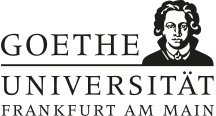
Odd Einar Haugen
When encoding medieval documents (and, in fact, almost any other handwritten documents) it is often difficult to decide what should be rendered in the transcription and what should be left out. It is a question of drawing a line between the graphetic variation and the graphemic one, in other words making the distinction between the etic and the emic, between graphetics and graphemics. Nobody would question the distinction between an r and an s, but what about the distinction between a straight r and a round one, or a round s and a tall one, etc.?
The Unicode Standard draws a clear (and also very pragmatic) distinction between glyphs and characters, claiming that only the former have semantic value. This distinction looks similar to the one drawn in linguistics between etics and emics, but the practical work with encoding manuscripts tends to show that the distinction often is more blurred than Unicode claims. Based on the work with encoding Medieval Nordic manuscripts in the Menota project, I will discuss how a text can be encoded at different levels and what consequences that has for the transcription of manuscript sources.
Unicode Standard: www.unicode.org
Medieval Unicode Font Initiative: www.mufi.info
Medieval Nordic Text Archive: www.menota.org
